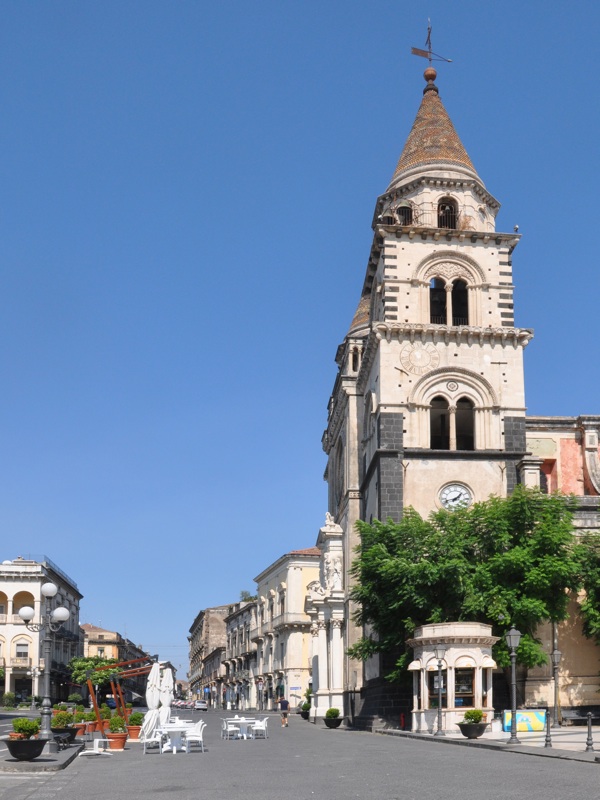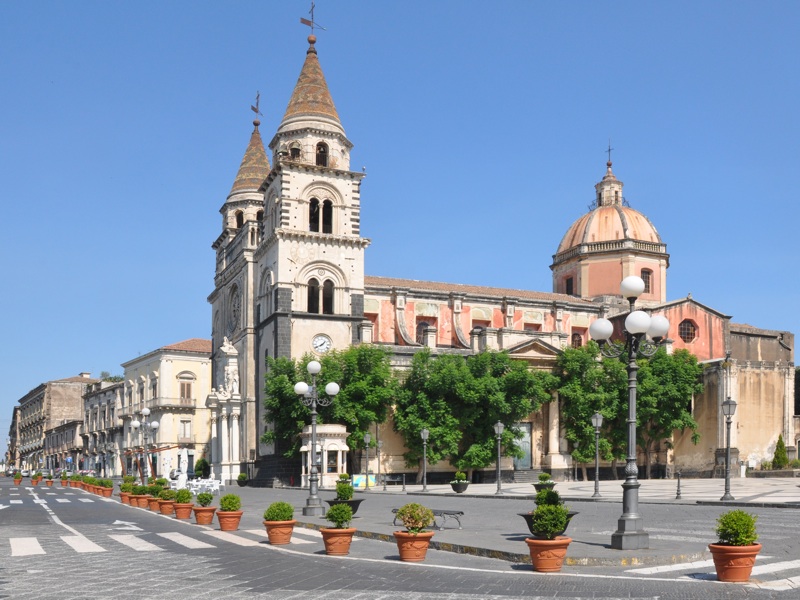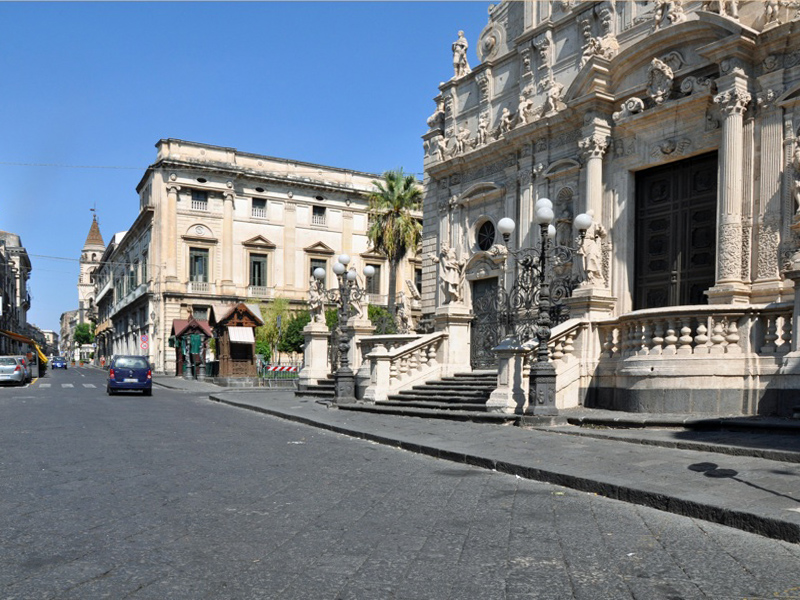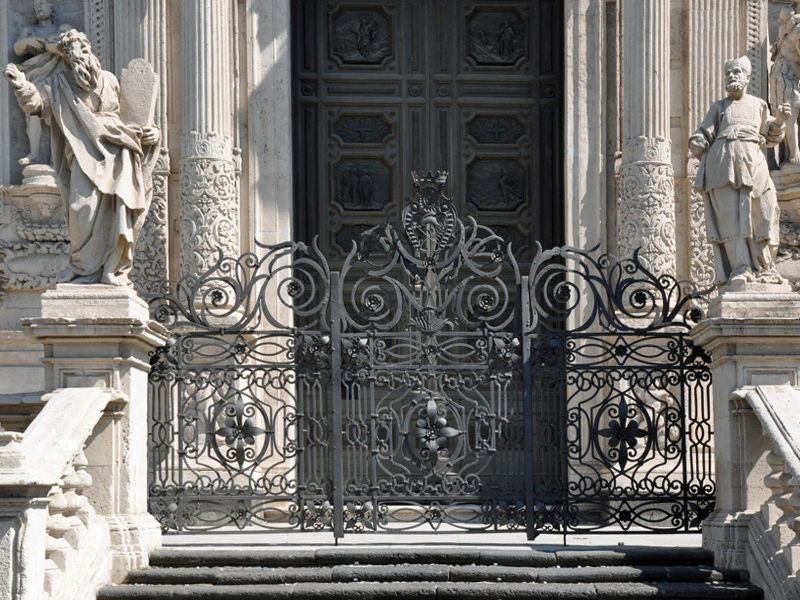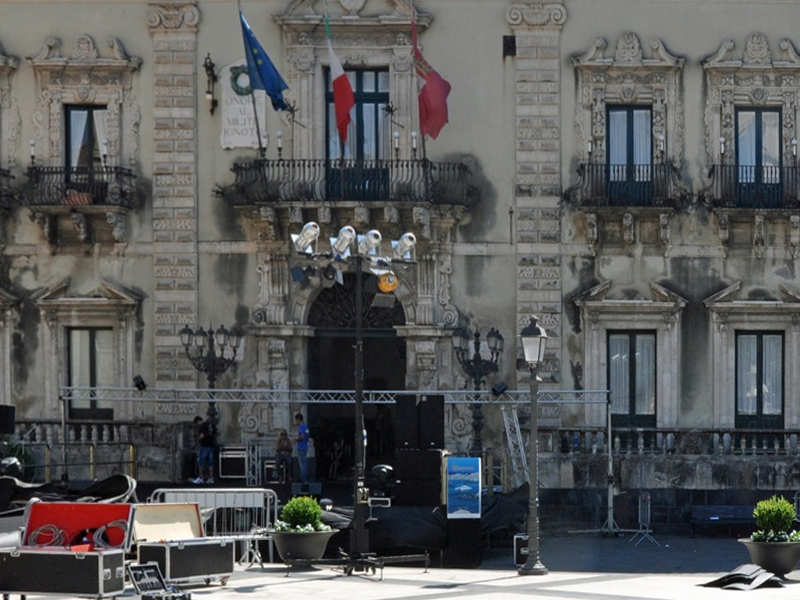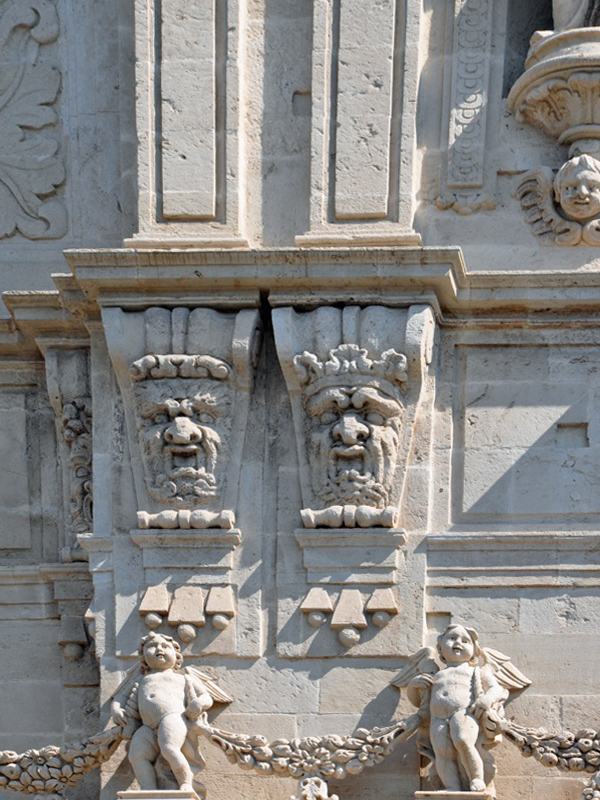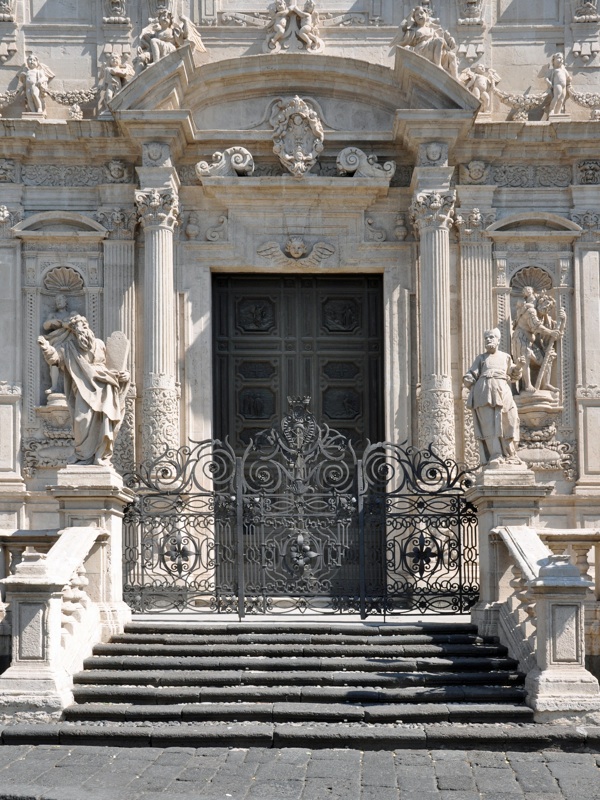Galeria zdjęć
 , 43 km southwest of Taormina
, 43 km southwest of Taormina  , 18 km (in a straight line) southeast of Etna
, 18 km (in a straight line) southeast of Etna  , located on a lava terrace overlooking the Ionian Sea (➤ map)(➤ map). From 1872 the seat of the diocese. A city known as a health resort since antiquity; from the end of the 16th century, famous for its spectacular carnival celebrations. Access via the A18 (E45) motorway - exit Acireale, or via the SS114 along the coast.
, located on a lava terrace overlooking the Ionian Sea (➤ map)(➤ map). From 1872 the seat of the diocese. A city known as a health resort since antiquity; from the end of the 16th century, famous for its spectacular carnival celebrations. Access via the A18 (E45) motorway - exit Acireale, or via the SS114 along the coast.Most sources associate the name of the town (as well as the names of Aci Trezza, Aci Castello and some others) with the name of the shepherd Aci, known from Greek mythology, killed by the cyclops Polyphemus, jealous of the nymph Galatea. On the other hand, in Greek times, Acireale was supposedly called Xiphonia, and the name Akis (or Acium) appeared only in Roman times, to later evolve: from Jachium in the Byzantine Empire, through Al Yag during the reign of the Arabs to Aci d'Aquila (or Aquilia) in Spanish times. It is known that in 1169 a strong earthquake devastated the region and prompted the inhabitants of the region to expand the settlement then centered around the castle standing roughly at the site of the present Aci Castello. At the end of the 14th century, a bit further north, on the site of what is now Acireale, a new city was created, called Aquilia Nova (of which only the cathedral's portal has survived to our times).
In 1693, Acireale was almost completely destroyed in another great earthquake. The city, rebuilt after this disaster, has survived to this day and is - especially for lovers of baroque architecture - one of the most important tourist destinations in Sicily.
The city's main square is Piazza Duomo
 ; there are two churches next to it - the cathedral
; there are two churches next to it - the cathedral  and the basilica of St. Peter and St.Paul
and the basilica of St. Peter and St.Paul  and Palazzo Municipale
and Palazzo Municipale  from 17th century (later destroyed several times by earthquakes and rebuilt), with characteristic balconies wrought in iron.
from 17th century (later destroyed several times by earthquakes and rebuilt), with characteristic balconies wrought in iron. . Next to it stands the Basilica of San Sebastiano
. Next to it stands the Basilica of San Sebastiano  with a decorative balustrade and statues, and one of the city's baroque palaces - Palazzo Pennisi di Floristella
with a decorative balustrade and statues, and one of the city's baroque palaces - Palazzo Pennisi di Floristella  .
.The Cathedral of Acireale (Cattedrale di Acireale
 ) is dedicated to the Annunciation of the Blessed Virgin Mary (Maria Santissima Annunziata), but also associated with the cult of St. Venery (Santa Venera), patroness of Acireale, whose relics are kept in one of the chapels (on the right arm of the transept). The construction of the three-nave church on the Latin cross plan was initiated at the end of the 16th century and finally completed in the second half of the 19th century. It is worth paying attention to the two bell towers with spiers covered with majolica tiles, a Baroque portal and vault frescoes in the interior.
) is dedicated to the Annunciation of the Blessed Virgin Mary (Maria Santissima Annunziata), but also associated with the cult of St. Venery (Santa Venera), patroness of Acireale, whose relics are kept in one of the chapels (on the right arm of the transept). The construction of the three-nave church on the Latin cross plan was initiated at the end of the 16th century and finally completed in the second half of the 19th century. It is worth paying attention to the two bell towers with spiers covered with majolica tiles, a Baroque portal and vault frescoes in the interior.Basilica dei Santi Pietro e Paolo
 was built in the 17th century, later rebuilt. It has one nave and one tower (the second one was planned, but was not built). Inside, note the figure of Christ (Cristo alla Colonna), an unknown author, but highly venerated in the city and worn in the traditional annual procession.
was built in the 17th century, later rebuilt. It has one nave and one tower (the second one was planned, but was not built). Inside, note the figure of Christ (Cristo alla Colonna), an unknown author, but highly venerated in the city and worn in the traditional annual procession.St. Sebastian (Basilica Collegiata di San Sebastiano
 ) is considered to be Acireale's most important monument. Established in the mid-17th century, it was rebuilt after the earthquake in 1693; in 1924, the temple was elevated to the dignity of a collegiate church. Particular attention should be paid to the façade, with its balustrade and statues, and in the interior to the frescoes by Pietro Paola Vasta.
) is considered to be Acireale's most important monument. Established in the mid-17th century, it was rebuilt after the earthquake in 1693; in 1924, the temple was elevated to the dignity of a collegiate church. Particular attention should be paid to the façade, with its balustrade and statues, and in the interior to the frescoes by Pietro Paola Vasta.Additional information
- The village was known as a spa (sulfur baths) already in Roman times. Today in the baths of St. Venera (Terme di Santa Venera), which was built in the neoclassical style in 1873 by Baron Agostino Pennisi Floristella, and which belonged to the Sicilian region since the mid-20th century, you can use the same thermal waters that were used in antiquity. The thermal baths, which in the 19th century and at the beginning of the 20th century were a world-famous healing center (visited by the Italian royal family, as well as by Wagner, Renan and other celebrities) lie on the southern outskirts of the city; in 1987, a second complex, Terme di Santa Caterina, was opened in the district of the same name.
- Since the end of the 16th century (the oldest known document comes from 1594), Acireale has been the place considered to be the most beautiful in Sicily for the grand and spectacular carnival celebrations, attracting crowds of spectators.
